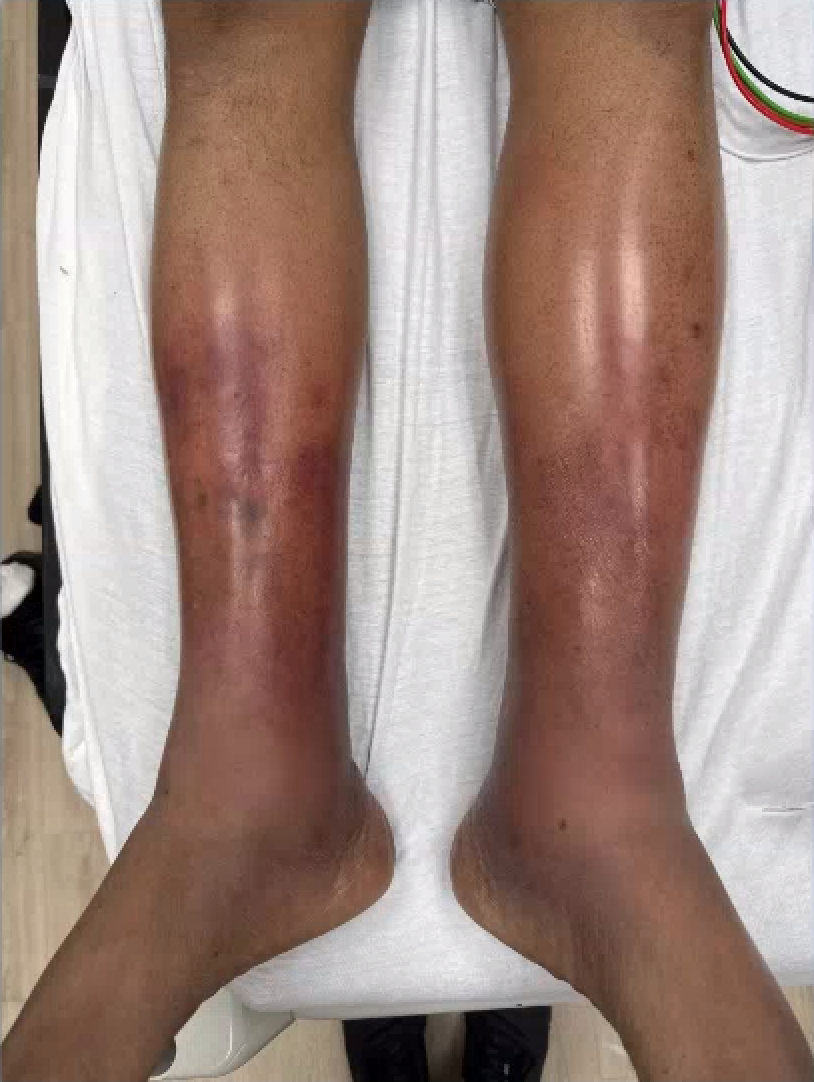Sunday Poster Session
Category: Liver
P1825 - Symptoms, Serology, and Surprises of Acute Hepatitis B
Sunday, October 26, 2025
3:30 PM - 7:00 PM PDT
Location: Exhibit Hall

Catherine Loehr, MD (she/her/hers)
Louisiana State University
New Orleans, LA
Presenting Author(s)
Catherine Loehr, MD1, Farhan Mohiuddin, MD2, Christopher Hayden, MD3, David Beyer, MD3
1Louisiana State University, New Orleans, LA; 2Louisiana State University School of Medicine, New Orleans, LA; 3LSU Health New Orleans, New Orleans, LA
Introduction: Acute hepatitis B (HBV) is transmitted via percutaneous or mucosal exposure to blood or body fluids including sexual contact, needle sharing, and perinatal transmission. Though U.S. incidence has declined due to vaccination, HBV remains a global health concern. High-risk groups include those with multiple sexual partners, men who have sex with men, injection drug users, and healthcare workers. Chronic HBV prevalence is highest in regions with perinatal transmission.
HBV’s incubation is 45 to 160 days. Many cases are asymptomatic but symptoms can include fatigue, nausea, vomiting, jaundice, and abdominal pain. Lab findings show elevated aminotransferases and bilirubin. Acute HBV has approximately 1% case-fatality rate with fulminant hepatitis being rare. Chronic infection risk is inversely related to age at infection: >90% in neonates, 25–50% in young children, and < 5% in adults.
Case Description/
Methods: A 47-year-old man with no known history presented to the ED with body aches, lower extremity swelling, chills, headaches, and nausea. He had recent prior visits for purpura and edema; initial workups were negative for DVT, HIV, and hepatitis C. He was treated empirically for presumed cellulitis. On return, labs showed markedly elevated AST (1902), ALT (1791), ALP (235), total bilirubin (3.3), and INR (1.6). Urine drug screen was positive for cocaine. Hepatitis B serologies confirmed acute infection: positive surface antigen, core IgM antibody, and Be antigen; HBV DNA of 2.3 million IU/mL. Hepatitis A and C were negative. Imaging was unremarkable. Peak AST/ALT were 2545/2430, which trended down with supportive care. The patient admitted nasal cocaine use and unprotected sex with women; vaccination history was unknown.
Discussion: This case reflects acute HBV with nonspecific symptoms and extrahepatic signs (purpura, edema), complicating early diagnosis. Serologies confirmed active infection. Elevated FIB-4 was likely confounded by acute injury.
Given clinical improvement, the patient chose observation over immediate antivirals, aligning with guidelines recommending therapy only for severe or prolonged cases. He received counseling on partner notification, safe sex, and vaccination for contacts. Hepatology follow-up was arranged to monitor labs and assess for progression.
This case highlights the importance of considering HBV in transaminitis and systemic symptoms, as well as the value of patient education and follow-up in managing acute infection.

Figure: Initial presenting symptoms of acute HBV: bilateral lower extremity purpura and edema.
Disclosures:
Catherine Loehr indicated no relevant financial relationships.
Farhan Mohiuddin indicated no relevant financial relationships.
Christopher Hayden indicated no relevant financial relationships.
David Beyer indicated no relevant financial relationships.
Catherine Loehr, MD1, Farhan Mohiuddin, MD2, Christopher Hayden, MD3, David Beyer, MD3. P1825 - Symptoms, Serology, and Surprises of Acute Hepatitis B, ACG 2025 Annual Scientific Meeting Abstracts. Phoenix, AZ: American College of Gastroenterology.
1Louisiana State University, New Orleans, LA; 2Louisiana State University School of Medicine, New Orleans, LA; 3LSU Health New Orleans, New Orleans, LA
Introduction: Acute hepatitis B (HBV) is transmitted via percutaneous or mucosal exposure to blood or body fluids including sexual contact, needle sharing, and perinatal transmission. Though U.S. incidence has declined due to vaccination, HBV remains a global health concern. High-risk groups include those with multiple sexual partners, men who have sex with men, injection drug users, and healthcare workers. Chronic HBV prevalence is highest in regions with perinatal transmission.
HBV’s incubation is 45 to 160 days. Many cases are asymptomatic but symptoms can include fatigue, nausea, vomiting, jaundice, and abdominal pain. Lab findings show elevated aminotransferases and bilirubin. Acute HBV has approximately 1% case-fatality rate with fulminant hepatitis being rare. Chronic infection risk is inversely related to age at infection: >90% in neonates, 25–50% in young children, and < 5% in adults.
Case Description/
Methods: A 47-year-old man with no known history presented to the ED with body aches, lower extremity swelling, chills, headaches, and nausea. He had recent prior visits for purpura and edema; initial workups were negative for DVT, HIV, and hepatitis C. He was treated empirically for presumed cellulitis. On return, labs showed markedly elevated AST (1902), ALT (1791), ALP (235), total bilirubin (3.3), and INR (1.6). Urine drug screen was positive for cocaine. Hepatitis B serologies confirmed acute infection: positive surface antigen, core IgM antibody, and Be antigen; HBV DNA of 2.3 million IU/mL. Hepatitis A and C were negative. Imaging was unremarkable. Peak AST/ALT were 2545/2430, which trended down with supportive care. The patient admitted nasal cocaine use and unprotected sex with women; vaccination history was unknown.
Discussion: This case reflects acute HBV with nonspecific symptoms and extrahepatic signs (purpura, edema), complicating early diagnosis. Serologies confirmed active infection. Elevated FIB-4 was likely confounded by acute injury.
Given clinical improvement, the patient chose observation over immediate antivirals, aligning with guidelines recommending therapy only for severe or prolonged cases. He received counseling on partner notification, safe sex, and vaccination for contacts. Hepatology follow-up was arranged to monitor labs and assess for progression.
This case highlights the importance of considering HBV in transaminitis and systemic symptoms, as well as the value of patient education and follow-up in managing acute infection.

Figure: Initial presenting symptoms of acute HBV: bilateral lower extremity purpura and edema.
Disclosures:
Catherine Loehr indicated no relevant financial relationships.
Farhan Mohiuddin indicated no relevant financial relationships.
Christopher Hayden indicated no relevant financial relationships.
David Beyer indicated no relevant financial relationships.
Catherine Loehr, MD1, Farhan Mohiuddin, MD2, Christopher Hayden, MD3, David Beyer, MD3. P1825 - Symptoms, Serology, and Surprises of Acute Hepatitis B, ACG 2025 Annual Scientific Meeting Abstracts. Phoenix, AZ: American College of Gastroenterology.
